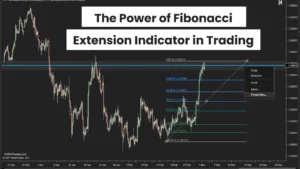The Indian stock market, a prominent indicator of the country’s economic health, has recently faced a significant downturn. This blog post aims to shed light on the factors behind this decline, exploring the complex interplay of economic, political, and global influences. By the end, you will have a comprehensive understanding of Why Indian Stock Market Falling?
Table of Contents
I. Recent Trends in the Indian Stock Market:
Let’s commence by examining the recent trends that have characterized the Indian stock market. These trends provide valuable context for understanding the ongoing decline.
Market Volatility:
The Indian stock market has been marked by substantial volatility in recent years. Periods of rapid growth and bullish optimism have been followed by sharp corrections and downturns, raising concerns about the market’s stability.
Rollercoaster Rides:
Investors have experienced a rollercoaster ride, with both euphoric highs and nerve-wracking lows. It’s essential to examine this turbulence to understand the root causes of the current decline.
II. Global Economic Factors:
The global economic landscape plays a pivotal role in influencing the Indian stock market. Let’s delve into some of the international factors affecting the market’s performance.
Geopolitical Events:
Geopolitical events, such as trade tensions and conflicts in neighboring regions, can send shockwaves through the Indian stock market. Understanding their impact is crucial.
International Economic Trends:
Global economic trends, such as changes in oil prices, currency exchange rates, and international trade policies, often have a direct impact on India’s stock market.
3Foreign Institutional Investments:
Foreign institutional investors (FIIs) and their decisions regarding Indian equities significantly influence market movements. Analyzing their behavior provides insight into the market’s direction.
III. Domestic Economic Factors:
Domestic economic factors also play a substantial role in the stock market’s performance. Here are some key elements to consider:
GDP Growth and Economic Health:
The overall health of the Indian economy, as reflected in GDP growth rates, inflation, and fiscal policies, is closely tied to stock market performance. Analyzing these factors is essential for a comprehensive view.
Government Policies and Reforms:
The policies and reforms initiated by the Indian government have a profound impact on the stock market. Whether it’s taxation changes or financial sector reforms, these can influence investor sentiment and market dynamics.
IV. Investor Sentiment and Behavior:
Understanding investor sentiment and behavior is critical when assessing stock market trends. It offers valuable insights into market psychology and movement.
Fear and Greed:
The emotional responses of investors, driven by fear during downturns and greed during bull markets, can significantly affect stock prices. Delving into these emotional aspects provides a holistic view.
Institutional vs. Retail Investors:
Distinguishing between the behavior of institutional investors and retail investors can highlight contrasting market dynamics. Analyzing their strategies and decision-making processes is key.
Foreign Investors:
Foreign investors often play a significant role in the Indian stock market. Their actions, whether buying or selling Indian equities, impact market movements.
V. Corporate Earnings and Industry Performance:
The performance of individual companies and industries within the Indian market is another key factor influencing the broader stock market. Examining these factors is essential for a comprehensive analysis.
Sectoral Impact:
Certain industries are more vulnerable to economic fluctuations than others. Exploring how different sectors are impacted by market conditions is important for investors.
Earnings Reports:
Corporate earnings reports provide valuable insights into the financial health of companies. A decline in earnings can trigger negative investor sentiment and market downturns.

VI. Regulatory Changes and Policy Implications:
Government policies and regulatory changes can significantly affect market dynamics. Let’s explore the role of regulatory adjustments and their implications on the Indian stock market.
Taxation Policies:
Changes in tax policies, such as the introduction of the Goods and Services Tax (GST), have had a significant impact on businesses and consequently, the stock market.
Financial Reforms:
Reforms in the financial sector, such as the banking sector, have implications for market stability and investor confidence.
VII. Potential Long-Term Implications:
It’s important to assess whether the current decline is a short-term correction or indicative of longer-term challenges. Consider the potential long-term implications on the Indian stock market.
Structural Issues:
Identify and discuss any structural issues within the Indian economy and financial sector that may pose long-term challenges.
Policy Reforms:
Evaluate the government’s efforts to address economic challenges through policy reforms and their potential effectiveness.
VIII. Investment Strategies in a Falling Market:
For investors, it’s crucial to have strategies for navigating a falling market. Provide actionable advice to help them protect and grow their investments.
Diversification:
Explain the importance of diversifying investments across different asset classes to reduce risk.
Risk Management:
Offer insights into effective risk management techniques to protect investments during market downturns.
Long-Term Perspective:
Encourage investors to maintain a long-term perspective and avoid making hasty decisions based on short-term market fluctuations.
IX. Conclusion:
In summary, the Indian stock market’s decline is influenced by a multitude of factors, including global economic trends, domestic economic health, investor sentiment, corporate performance, and government policies. While the current downturn may pose challenges, understanding these factors provides a roadmap for investors to make informed decisions.
Also Read:











